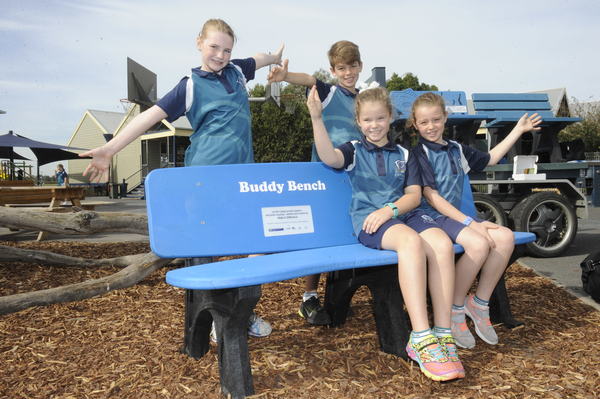CORNISH College students can take a seat on a bench made from plastic bags.
The Bangholme school received a thankyou for its commitment to soft plastic recycling from Sustainability Victoria waste and resource recovery programs director Jenny Pickles on Tuesday 19 April.
Ms Pickles also helped the parents’ association to present a Buddy Bench made from the equivalent of 21,250 pieces of plastic packaging.
Other guests included National Packaging Covenant Industry Association (NPCIA) CEO Trish Hyde, Mordialloc MP Tim Richardson and City of Greater Dandenong councillors Angela Long and Matthew Kirwan.
They heard from students about their recycling initiatives.
The Cornish College Make A Difference (MAD) leaders wanted to create a welcoming space on the campus to help foster friendship in the playground.
They came up with a plan to install a Buddy Bench – a seat where students could meet up with their friends before going to play and make new friends along the way.
The MAD leaders, Sustainability leaders and EcoKids wanted the bench to be made from a sustainable material.
It might contain some soft plastic that students have collected through participation in the REDcycle Program.
Empty bread, cereal and frozen food bags, plastic shopping bags and more can be dropped at participating schools, supermarkets or other drop-off points.
It’s delivered to Carrum Downs-based manufacturer Replas where it’s used in fitness circuits, signage, sturdy outdoor furniture and more.
“Through the program, we can keep significant quantities of soft plastics out of landfill and give them another life, such as in this Buddy Bench,” Ms Pickles said.
Cornish College principal Vicki Steer said the school was delighted to be involved in a program that involved not only the school community, but the wider community.
“Our vision of sustainable living is all-encompassing and includes not only environmental concerns, but personal, socio-cultural and urban/technological dimensions as well,” she said.







